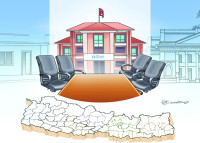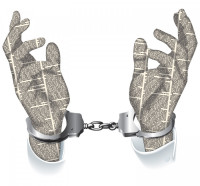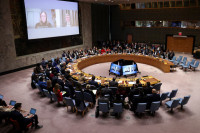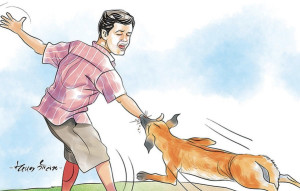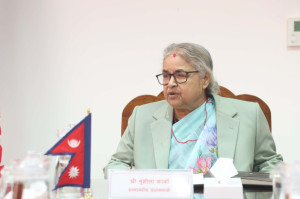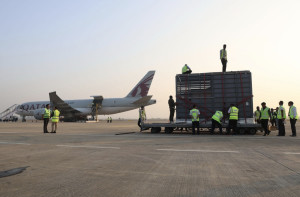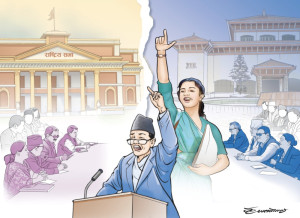Columns
Arakan Army in Myanmar’s Rakhine state
India must leverage the cross-border ethno-cultural ties to secure its projects in the state.
Smruti S Pattanaik
Since December 2024, the Arakan Army (AA) has been entrenching itself in the Rakhine state after the fall of the Western Regional Military Command at Ann Township in central Rakhine. As the military arm of the United League of Arakan (ULA), a Buddhist front, the AA’s military victory is remarkable among the rebel groups fighting the Myanmar Army. After taking control of Maungdaw township, the army was able to completely control Myanmar’s 270-kilometre-long border with Bangladesh.
The presence of the army right next to the borders of Bangladesh and India posed new challenges. Both countries did not want the conflict to spill over across the border, especially Bangladesh, which is hosting nearly a million Rohingya refugees. Similarly, China, which has massively invested in a port in this region, is equally concerned about the future of its investment. The Chinese investment in Kyaukphyu port provides an outlet to the Indian Ocean, helping it overcome its Malacca dilemma.
AA and regional actors
The AA was founded by a former student activist, Twan Mrat Naing, in 2009, and has emerged as a dominant group in the current civil war. The army’s capture of Paletwa in Chin state threatened India’s strategic connectivity, which it seeks to establish between Paletwa and Zorinpui in Mizoram. This link is part of the Kaladan Multi-Modal Transit Transport Project (KMTTP). For a long time, India has been working to connect its landlocked northeast to the nearest port, which has not been possible due to instability in Myanmar.
Mizoram remains a lynchpin of this connectivity project. It was not surprising that K Vanlalvena, a member of the Indian Parliament from the Mizo National Front, visited Paletwa, one of the westernmost towns of Myanmar, ostensibly to review the progress of KMTTP and met the army which controls that area. The 110km Paletwa-Zorinpui road link remains critical to India’s connectivity to the North East using Sittwe Port.
While India continues to remain in touch with the military regime in Myanmar, it cannot remain immune to the development near the border, especially the flow of refugees to Mizoram and Manipur. The AA controlling territory just across the border has signalled that it does not oppose the Indian development projects, believing they will benefit the people.
While expanding its control area, the AA has yet to take over Sittwe and Kyaukphyu ports and the Kyaukphyu Special Economic Zone of China. The AA would not like to threaten the China-Myanmar Economic Corridor or India’s connectivity project in Sittwe. While some analysts argue that the army would like to consolidate its control and pressurise the Myanmar Army to refrain from overtaking the territory that it already controls, Tatmadaw’s relations with China and India will also be keenly watched.
Beijing and the State Administration Council (SAC), headed by the Junta, agreed to form a joint private security corporation last year to protect Chinese investments. The Myanmar Parliament passed a law to operationalise this agreement in February 2025. China has been desperately trying to pursue the Ethnic Armed Organisations (EAO) to negotiate with the military in Myanmar, which would help China protect its commercial interests.
Forced conscription and conflict
Given the threat posed by the EAO, the Myanmar military amended the conscription law in February this year to recruit men aged 18 to 35 and women aged 18 to 27 for two years to replenish its fighting force, which it is steadily losing as it is stretched thin. It has enlisted Rohingyas on its side to fight the AA, and reportedly, 2,000 people from the Rohingya camps in Bangladesh joined the Tatmadaw, hoping that this support would help them in gaining citizenship. Bangladesh’s National Security Advisor, who was initially appointed as Bangladesh’s Chief Adviser’s High Representative for the Rohingya issue, has also advocated dialogue with the army to address any further flow of Rohingya refugees into Bangladesh.
The relationship between the Rohingyas and the AA remains fragile, and they have accused the AA of torturing them after capturing Buthidaung and Maungdaw in Rakhine. It remains to be seen whether the ARSA will now fight the AA to secure the Rohingyas living in Rakhine. To live its ‘Arakan dream’—establishing the principle of the Way of Rakhita which is to re-establish a sovereign state of Arakan—the AA has extended an olive branch to Tatmadaw to settle the issue through political means rather than militarily, though this has not been accepted.
India’s connectivity push
Despite challenges, the link between Kolkota Port and Sittwe Port, part of KMTTP, was inaugurated on May 9, 2023. In the 2024-25 financial year, India had allocated Rs4.22 crore to develop KMTTP, of which Rs3.97 crore was spent. From June 2024 to February 2025, 46,317.96 MT of goods were carried through the Sittwe Port, signalling its importance in India’s overall objective to connect the North East. The Trilateral Highway that connects India and Thailand through Myanmar and beyond is staggering behind. The Kalewa-Yaryi project road and 69 bridges in the Tamu-Kyigone-Kalewa sector, which forms part of the trilateral highway, will also take time to be completed.
India has also projected this port to have huge commercial value for the Bangladesh-Bhutan-India-Nepal (BBIN) countries. According to some estimates, the time taken for the transportation of goods between Kolkata and Agartala and Aizawl in India will decrease by 50 percent, boosting economic activities in this region. The Indian Government’s decision to connect Shillong in Meghalaya with Silchar in Assam, a 166.8-km four-lane highway high-speed corridor along NH-6, appears to be a move to compensate for the loss of connectivity with Bangladesh. On April 30, this corridor was approved by the Central government.
While the AA does not want to annoy external powers and their investment in Rakhine, it is not clear whether it will confine itself to the areas it already dominates militarily or expand further. This could lead to a confrontation with China and India, who have not only invested but also provided military support to the junta. For India, which has provided assistance of $1.5 billion to Myanmar, of which projects worth nearly $1 billion are completely grant-funded, the Sittwe Port in Myanmar remains a vital link for its North East and also gives a boost to its Act East policy. As the AA is keen on consolidating its hold, India needs to leverage the cross-border ethno-cultural ties to buy security for its projects in the Rakhine state.




 5.83°C Kathmandu
5.83°C Kathmandu
